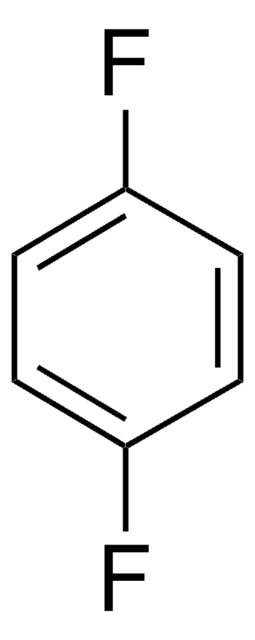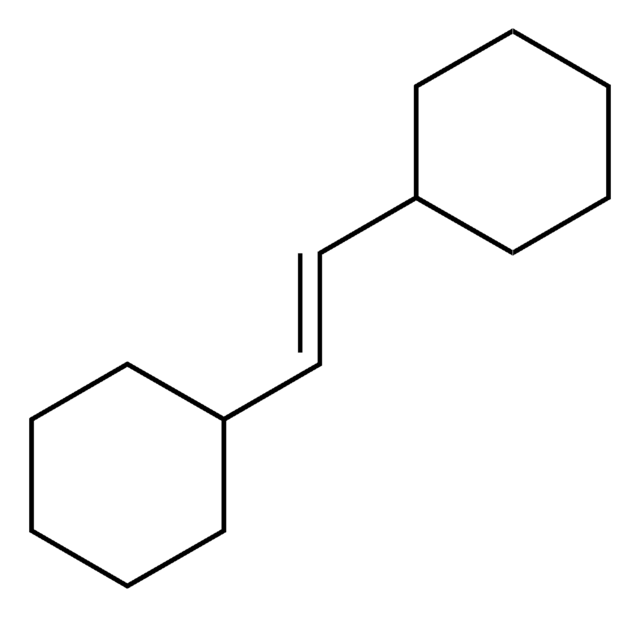All Photos(1)
About This Item
Empirical Formula (Hill Notation):
C6H4F2
CAS Number:
Molecular Weight:
114.09
Beilstein:
1904541
EC Number:
MDL number:
UNSPSC Code:
12000000
PubChem Substance ID:
Recommended Products
grade
analytical standard
Quality Level
CofA
current certificate can be downloaded
packaging
ampule of 1000 mg
technique(s)
HPLC: suitable
gas chromatography (GC): suitable
refractive index
n20/D 1.441 (lit.)
bp
88-89 °C (lit.)
mp
−13 °C (lit.)
density
1.11 g/mL at 25 °C (lit.)
application(s)
environmental
format
neat
storage temp.
2-30°C
SMILES string
Fc1ccc(F)cc1
InChI
1S/C6H4F2/c7-5-1-2-6(8)4-3-5/h1-4H
InChI key
QUGUFLJIAFISSW-UHFFFAOYSA-N
Looking for similar products? Visit Product Comparison Guide
Application
1,4-Difluorobenzene has been used as a dopant, in order to ionize the soluble organic species present in huolinguole lignite coal by using atmospheric pressure photoionization technique coupled with mass spectrometry (APPI-MS). It also plays role of an internal standard in investigating the 19F nuclear magnetic resonance (NMR) spectrum of electrophilic trifluoromethyl thiolating agents prepared from nucleophilic tetramethylammonium trifluoromethyl thiolate.
Refer to the product′s Certificate of Analysis for more information on a suitable instrument technique. Contact Technical Service for further support.
Signal Word
Danger
Hazard Statements
Precautionary Statements
Hazard Classifications
Flam. Liq. 2
Storage Class Code
3 - Flammable liquids
WGK
WGK 3
Flash Point(F)
35.6 °F - closed cup
Flash Point(C)
2.0 °C - closed cup
Personal Protective Equipment
dust mask type N95 (US), Eyeshields, Gloves
Choose from one of the most recent versions:
Already Own This Product?
Find documentation for the products that you have recently purchased in the Document Library.
Analysis of Soluble Organic Species of Huolinguole Lignite by Atmospheric Pressure Photoionization-Mass Spectrometry
Ya-Ru Y, et al.
Chinese Journal of Analytical Chemistry, 45, 1005-1011 (2017)
Preparation of Electrophilic Trifluromethylthio Reagents from Nucleophilic Tetramethylammonium Trifluoromethylthiolate
Kovacs S, et al.
Advanced Synthesis & Catalysis, 359, 250-254 (2017)
Michael H Abraham et al.
European journal of medicinal chemistry, 44(2), 885-890 (2008-07-08)
The convulsant activity of 48 compounds studied by Eger et al. has been analyzed using an Abraham solvation equation. Four compounds identified by Eger et al. as more potent than expected were similarly identified, and for the remaining 44 compounds
Our team of scientists has experience in all areas of research including Life Science, Material Science, Chemical Synthesis, Chromatography, Analytical and many others.
Contact Technical Service








